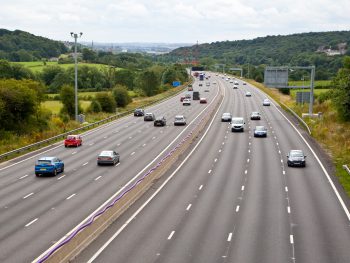Progress on smart motorways but safety concerns remain
Eleven more sections of smart motorway will be upgraded with extra places to stop in an emergency under ongoing reforms to enhance safety.

The AA says more needs to be done to reduce the dangers of live lane stops
Earlier this year, Prime Minister Rishi Sunak cancelled all plans for future smart motorways while confirming that existing smart motorways would continue to get safety improvements. These include 150 extra emergency refuge areas and technology to spot broken-down vehicles under a previously announced £900m package. However, he stopped short of scrapping all existing smart motorways.
National Highways has now published its latest progress in delivering a series of actions to further improve the safety of smart motorways and announced a further 11 locations for additional emergency areas. These include on the M1, M3, M4, M5, M6, M20, M25 and M27.
The quango for motorways and major roads also continues to roll out radar-based stopped vehicle detection (SVD) technology and says its data from three pilots reveals the technology has improved and is now meeting performance expectations.
In its third annual progress report, National Highways confirmed it has now delivered all the actions set out in the March 2020 Smart Motorway Safety Evidence and Action Plan due to have been completed by this point. This includes achieving the national average 10-minute attendance time for traffic officers on ALR motorways where emergency areas are more than a mile apart.
The report includes the safety evidence (2017 to 2021), which continues to show that overall, all three types of smart motorway are safer than conventional motorways in terms of deaths or serious injuries.
National Highways has also published scheme-by-scheme data, showing how safety compares on smart motorway sections before and after they were upgraded.
Its figures show that the risk of a collision and the risk of a serious injury or death due to a stopped vehicle collision is lowest on conventional and controlled motorways. As reported in the second-year progress report, the risk of a collision between a moving and a stopped vehicle is greater on all-lane running motorways (where the hard shoulder is permanently removed) and dynamic hard shoulder motorways (where the hard shoulder is used as a live lane in at the busiest times) than on other motorway types, but the risk of a collision involving only moving vehicles is lower.
National Highways chief executive Nick Harris said: “Safety is our highest priority and we are committed to further improving all lane running motorways. We have completed key upgrades to improve the performance of technology to detect stopped vehicles, and today we have set out the next sections of motorway to benefit from the programme to install more than 150 extra emergency areas to give drivers added reassurance. We are also continuing to invest £105m to improve the resilience of our operational technology systems.”
The AA said it applauded National Highways’ progress on safety measures, following serious concerns raised by the motoring services organisation and others.
But Edmund King, AA president, added: “The fundamental problem remains that stopped vehicle incidents are more frequent on all lane running ‘smart’ motorways compared to motorways with hard shoulders. To address this, the hard shoulder needs to be reinstated or at the very least the number of emergency areas needs to be radically increased.
“The prospect of breaking down or stopping in a live lane is daunting, as our AA call centre operators who take the distressed calls can confirm. The advice remains that if you break down in a live lane and can’t exit the vehicle safely via the passenger seat, you should keep your seat belt on, put on hazard lights and other lights and dial 999. It is an emergency.
“Of course, drivers can also do their bit by ensuring their vehicles are in good condition, by reacting to warning lights, ensuring they have enough fuel or charge and by driving safely.
“We welcomed the scrapping of new ‘smart’ motorways but even with the progress made with new technology on existing ones, more needs to be done to reduce the dangers of live lane stops.
“We have called for more ‘controlled motorways’ which the report shows have lower killed or serious injury rates (KSI) than all lane running (1.31 compared to 1.43). These motorways have the benefit of ‘smart’ motorway technology whilst also having a hard shoulder.”












